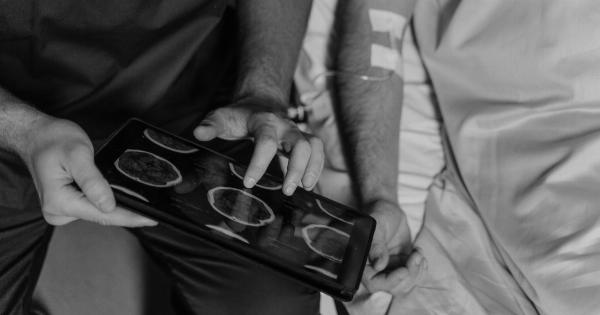For decades, ties have been an essential part of men’s formal attire, adding a touch of elegance and sophistication to their outfits. However, recent studies have raised concerns about the potential health risks associated with wearing ties.
While ties may seem harmless, they can actually pose a number of threats to men’s health. This article explores the real risks of wearing ties and provides valuable insights into how to mitigate these dangers.
The Tight Knot: Restricted Blood Flow
One of the primary concerns associated with wearing ties is the tightness of the knot. Tying a tie too tightly can restrict blood flow to the brain, leading to decreased oxygen supply and potential cognitive impairment.
Studies have shown that excessive pressure on the carotid artery can cause dizziness, headaches, and even fainting. It is crucial for men to strike a balance between a well-tailored appearance and allowing sufficient blood circulation.
Neck Pain and Musculoskeletal Issues
Constantly wearing a tie can contribute to neck pain and musculoskeletal problems. The weight of the tie, along with the pressure exerted on the neck, can strain the muscles and ligaments, leading to discomfort and stiffness.
Prolonged use of ties can also contribute to poor posture, as men tend to adjust their neck position to accommodate the tightness of the knot. Over time, this can result in chronic pain and spinal alignment issues.
Open Loops: A Breeding Ground for Germs
Ties often come into contact with various surfaces and environments throughout the day. From public transportation to shared workspaces, ties can easily pick up germs and bacteria.
The fabric of the tie acts as a breeding ground for pathogens, making it a potential source of infection. Touching the tie and subsequently touching the face or mouth can facilitate the transmission of these harmful microorganisms. Regularly cleaning and disinfecting ties can help minimize the risk of germ transfer.
Allergies and Skin Irritation
Some men may develop allergies or skin irritation due to the materials used in tie production. Synthetic fabrics, such as polyester, can cause skin sensitivity and rashes in individuals with allergies.
Additionally, dyes and chemicals present in certain ties can also trigger allergic reactions. Opting for ties made from natural fibers, like silk or cotton, can reduce the likelihood of experiencing allergic responses.
Choking Hazards and Safety Concerns
Although rare, ties can pose a choking hazard, especially in certain work environments or around machinery. If a tie gets caught in machinery or a similar object, it can lead to serious injuries, including strangulation.
Some industries, such as manufacturing or construction, have strict safety regulations regarding ties to prevent accidents. Being mindful of the surroundings and wearing tie clips or tacks can help minimize the risk of entanglement.
Association with Serious Health Conditions
While not a direct health hazard, studies have identified potential correlations between wearing ties and certain health conditions.
Researchers have found that wearing neckties might increase intraocular pressure, which could contribute to the development of glaucoma. Moreover, prolonged tie wear has also been linked to an increased risk of acid reflux and heartburn. Though more research is needed to establish causal relationships, these findings highlight the need for caution when it comes to tie usage.
The Right Tie and Wearing Techniques
Despite the potential risks associated with wearing ties, it is possible to enjoy the elegance of this accessory without compromising health. By following some simple guidelines, men can reduce the hazards related to tie wear.
First and foremost, opt for wider ties, as they distribute the pressure more evenly across the neck. Narrow ties tend to exert greater pressure and can be more problematic in terms of blood flow restriction and musculoskeletal issues.
Make sure to tie the knot comfortably, allowing enough space for easy finger insertion. A slight looseness can go a long way in preventing restricted blood flow and discomfort.
Additionally, avoid using overly tight collar shirts, as they exacerbate the pressure imposed by the tie.
Choose ties made from natural, breathable fabrics to minimize the risk of allergies and skin irritation. Natural fibers not only enhance comfort but also allow better air circulation around the neck area.
Cleaning ties regularly is vital in reducing the microbial load they carry. Follow the manufacturer’s instructions or seek professional cleaning to ensure the tie remains both stylish and hygienic.
Lastly, consider alternatives to traditional ties. Bow ties, for instance, offer a fashionable and safer option, reducing the length and weight associated with conventional ties.
Maintaining a Balance: Style and Health
The real risks associated with wearing ties should not deter men from embracing their personal style.
By adopting proper techniques and making informed choices, men can minimize the health hazards while still incorporating ties into their fashion repertoire. Remember, striking a balance between style and health is crucial for a confident and well-rounded appearance.




























